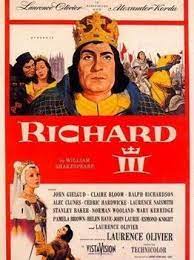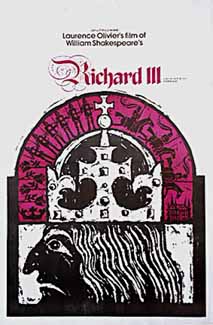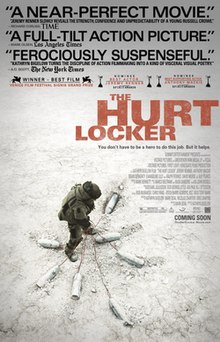
Won’t some of you people get him up off the ground and into it? 1909. Las Cruces, New Mexico. Pat Garrett (James Coburn) is riding with men working for the Santa Fe Ring, when he is ambushed and coldly killed by his associates, including one John W. Poe (John Beck). In 1881 in Old Fort Sumner, New Mexico, William H. Bonne aka Billy the Kid (Kris Kristofferson) is passing the time with friends shooting chickens for fun. Garrett, an old friend of Billy’s, rides into town with Deputy Sheriff J. W. Bell (Matt Clark) and joins the diversion. Later, over drinks, Garrett informs Billy that the electorate want him out of the country and in five days when he becomes Sheriff of Lincoln County he will make Billy leave. Six days later, Garrett and his deputies surround the small farmhouse where Billy and his gang are holed up. In the ensuing gun battle, Charlie Bowdre (Charles Martin Smith) and several other men on both sides are killed and Billy surrenders and is taken prisoner. While Billy awaits his execution in the Lincoln County Jail for the killing of Buckshot Roberts a year earlier, he is taunted and beaten by self-righteous Deputy Sheriff Bob Olinger (R.G. Armstrong) while the hangman’s gallows are being built nearby. Garrett warns Olinger not to taunt Billy again or he will be fired and sent back to Texas; then, Garrett leaves town to collect taxes leaving his two deputies to guard Billy. Olinger again argues with Billy but after J. W. Bell intervenes, Olinger leaves to get a drink. Billy finds a gun hidden for him in the outhouse and shoots Bell in the back. He then retrieves Olinger’s shotgun loaded with sixteen thin dimes and shoots Olinger dead in the street, saying, Keep the change, Bob. Billy leaves town. After Garrett returns to Lincoln and recruits a new deputy sheriff Alamosa Bill Kermit (Jack Elam), he rides to Santa Fe to meet with Governor Lew Wallace (Jason Robards), who introduces him to a pair of powerful men from the Santa Fe Ring. They offer him $1,000 for the capture of Billy the Kid, with five hundred dollars upfront. Garrett rejects the money and says they can pay him in full when Billy is brought in. He warns them that he will be successful as long as another cattle war is not started. Meanwhile, Billy returns to his gang at Old Fort Sumner, where he decides to hide back for a few days. He is confronted by three strangers looking to kill him; all three are killed in the subsequent shootout, helped by another stranger called Alias (Bob Dylan), who kills one of the men with a knife through the neck. Alias had witnessed Billy’s escape from the Lincoln County Jail. Garrett meets up with Sheriff Colin Baker (Slim Pickens), hoping he can provide information on Billy’s whereabouts. Baker and his wife go with Garrett to arrest some of Billy’s old gang. In a gunfight, the gang members including Black Harris (L.Q. Jones) are killed and Baker is mortally wounded. Baker’s wife (Katy Jurado) comforts the dying lawman as he waits to die by a river. Later that evening, Garrett watches a barge floating down a river with a man shooting bottles in the water. The two face off briefly from a distance before lowering their rifles. Garrett is joined by a glory-seeking John W. Poe, who works for the Santa Fe Ring. The two ride southwest to meet John Chisum (Barry Sullivan) a powerful cattle baron, who informs them that Billy has been rustling his cattle again and killed some of his men; Billy once worked for him and claimed that Chisum owes him $500 of back salary … I sure wish you’d try, son. I got my shotgun full of 16 thin dimes. Enough to spread you out like a crazy woman’s quilt. With its sweeping photography by John Coquillon, a lineup of genre performers that calls up legions of older films and a legendary soundtrack by Bob Dylan with the song Knockin’ On Heaven’s Door seared into cultural memory, this would appear to have been an instant classic. The reality was quite different. Rudy Wurlitzer’s screenplay was rewritten in collaboration with director Sam Peckinpah, who took over from Monte Hellman when Coburn indicated he wanted to play Garrett. Peckinpah had already made two films that significantly revised perceptions of the western genre with Ride the High Country and The Wild Bunch and this was going to conclude his thoughts on the subject. Wurlitzer’s feelings about the changes were revealed in a book about the making of the film and they were not kind to the director. Surrounding Kristofferson with western acting legends bolstered the cast which now boasted Dylan, included at Kristofferson’s request. Peckinpah had apparently never heard of him. You’re in poor company, Pat. Following a very troubled shoot in Mexico where MGM insisted local equipment and crew be used led to expensive reshoots with decent cameras and the soaring production costs and issues arising caused a serious blip in Peckinpah’s career and reputation. A chaotic edit using six different editors with Peckinpah’s 165 minute cut deemed unreleasable led to a second cut that was forty minutes shorter but wasn’t approved by the studio whose eventual 106 minute release version pleased nobody including most of the critics. Ten years or so later Peckinpah’s preview edition got a release on Laserdisc and eventually DVD which includes bits of every cut in yet another iteration and happily along with Peckinpah’s version is what we’ve watched again. I can assure you, Mr. Garrett, that Chisum and the others have been advised to recognize their position. And in this particular game, there are only a few plays left. I’d advise you to grab on to a winning hand while you have a chance. The texture of the film improves in the longer cut if only to enhance the leads’ characterisation – we literally see more of them as they develop through the framing story. It also lends a kind of poignancy that is otherwise elided in a more violent sequences of shoot-em-ups in the shorter version. I used to know when to leave. The question remains about the use of the Dylan song whether for aesthetic or narrative significance but its inclusion makes this stand out from the crowd. Kristofferson told Spencer Leigh in a 2004 interview, Knockin’ On Heaven’s Door was in that scene where Slim Pickens was dying and it was the strongest use of music that I had ever seen in a film. Unfortunately Sam didn’t include it in his Director’s Cut. Sam had a blind spot there. He thought that the producer had forced Bob on him to make the film commercial and I don’t think he appreciated who Bob was. I thought Dylan was great in the film, he looked great and you couldn’t take your eyes off him, and his music was fantastic. There are showstopping images – to name but two, the opening shooting of the chicken which of course brings to mind Cockfighter (the next film that Hellman would make after he was supposed to make this) and when the kids play with the hangman’s noose which is shocking yet oddly pleasing only because it seems like something kids would do when they’ve nothing else to hand. The beating administered to Billy by religion-crazed Deputy Sheriff Olinger is properly shocking with the screams of Repent lingering in the air. This stops just short of great art but it is still a truly iconic western with moments of almost bucolic expressivity. When are you going to learn that you can’t trust anybody, not even yourself?






